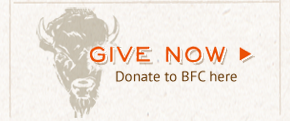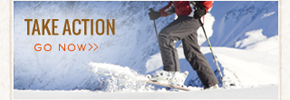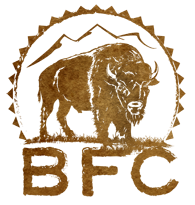It is the “declared national policy of saving endangered species,” to “halt and reverse the trend toward species extinction, whatever the cost.”
U.S. Supreme Court (1978).

Join our Campaign to Protect Yellowstone Bison as an Endangered Species
Wild Yellowstone bison are at risk of extinction. Loss of range and habitat, lost corridors, livestock agency control, inadequate and nonexistent regulatory mechanisms threaten or endanger the persistence of the country’s last bison roaming in the wild.
Endangered Species Act protection and recovery provides a pathway for honoring, protecting and restoring Yellowstone’s unique and distinct bison herds in the wild.
The U.S. Fish & Wildlife Service is reviewing scientific evidence and information and factors placing the migratory bison herds in Yellowstone at risk of extinction.
Until further notice, the U.S. Fish & Wildlife Service is accepting your input. Your comment in support for Endangered Species Act protection for Yellowstone bison in the wild is vitally important to halt and reverse the trend toward extinction.
Please take action today by sending in your comments in support of protecting and recovering wild Yellowstone bison.
Service Asks for New Science on Yellowstone Bison!
The U.S. Fish & Wildlife Service is seeking the latest science on factors jeopardizing Yellowstone’s bison herds including, but not limited to, the:
- Historical and current distribution of the Yellowstone bison, population sizes, population trends, and any updates to the Yellowstone bison’s predicted range;
- Genetics;
- The effects of severe weather occurrences on Yellowstone bison and its habitat;
- The effects of climate change on Yellowstone bison and its habitat;
- Disease and predation;
- The effects of existing regulatory mechanisms;
- Any updates to laws, regulations, policies, or management plans that may apply to the population; and
- Ongoing or planned conservation efforts for the population and its habitat.
You can help by collecting and sending the latest science to This email address is being protected from spambots. You need JavaScript enabled to view it..
The U.S. Fish & Wildlife Service is asking for data, maps, methods used to gather and analyze data, publications, reports, or letters from knowledgeable sources, and spatial data (location-specific information). Read the U.S. Fish & Wildlife Service’s interested party letter here (January 3, 2024 PDF 123kb).
Just Released!
Buffalo Field Campaign’s findings on factors jeopardizing the unique and Distinct Population Segment of Yellowstone bison (June 1, 2023) (PDF 22.5MB)
Buffalo Field Campaign sources for a Distinct Segment of Yellowstone bison June 1, 2023 (zip folder 2.3GB)
Buffalo Field Campaign Actions needed for protecting and fully restoring wild bison herds (March 2, 2024) (PDF 1.6MB)
Buffalo Field Campaign Determining the loss, destruction, and curtailment of Yellowstone bison’s indigenous range (March 2, 2024) (PDF 1.6MB)
Buffalo Field Campaign Examining climate change together with other factors threatening the persistence of Yellowstone bison (March 18, 2024) (PDF 1.6MB)
Buffalo Field Campaign Yellowstone bison population structure (March 22, 2024) (PDF 1.6MB)
Buffalo Field Campaign Extirpated range must be examined in establishing a baseline of cumulative effects for investigating factors threatening Yellowstone’s distinct bison herds (April 19, 2024) (PDF 1.6MB)
Need help developing a unique comment? Click on our FAQ to help you get started.
Frequently Asked Questions

Endangered Species Ads
Share and post our Endangered Species ads for American bison
Buffalo Field Campaign Help Save The Yellowstone Bison ad 1 (PDF)
Buffalo Field Campaign Help Save The Yellowstone Bison ad 2 (PDF)
Buffalo Field Campaign Help Save The Yellowstone Bison ad 3 (PDF)
Legal actions to protect Yellowstone bison as an Endangered Species
Court Case
U.S. District Court Judge Randolph D. Moss' decision, Buffalo Field Campaign, Western Watersheds Project, Friends of Animals v. Martha Williams, (Jan. 12, 2022) (PDF, bench opinion)
Buffalo Field Campaign v. Williams, 2022 WL 111246 (D.D.C. Jan. 12, 2022) (PDF, Word)
Buffalo Field Campaign v. Zinke, 289 F. Supp. 3d 103 (D.D.C. Jan. 31, 2018) (PDF, Word, published case)
U.S. District Court Judge Christopher R. Cooper’s decision, Buffalo Field Campaign, Western Watersheds Project, Friends of Animals v. Zinke, (Jan. 31, 2018) (PDF, bench opinion)
Click here to see the endangered species ad (PDF).
Click here to view the endangered species ad sources (PDF)
Press
December 28, 2023
Curious Case of Bison, National Mammal has rebounded, but still endangered? (Brett French, Missoulian, PDF 3.6MB)
January 13, 2022
Yellowstone bison get another shot at ESA listing after federal judge agrees with wildlife protection groups
March 24, 2020
Groups Seek Protection for Yellowstone Bison Amid Roundup and Slaughter
September 6, 2019
Conservationists blast USFWS Denial of Yellowstone Bison Protection
February 1, 2018
Court Overturns Political Decision to deny Endangered Species Protection to Bison
Click here to see the full endangered species ad (PDF).
Click here to view the endangered species ad sources (PDF)
Petitions to list the Distinct Population Segment of Yellowstone bison
Buffalo Field Campaign & Western Watersheds Project, Petition to list the Yellowstone Bison as a Distinct Population Segment under the Endangered Species Act (November 2014) (PDF 692kb).
James Horsley, Petition to List the Yellowstone National Park Bison Herd as Endangered (January, 1999) (PDF 2.9MB)
James Horsley, A Petition to Protect Yellowstone's Wild Bison from Extinction (January 2017) (PDF 13MB)
James Horsley, Yellowstone's Wild Bison On the Brink of Extinction (February 2018) (PDF 6.5MB)
James A. Bailey & Natalie A. Bailey, Petition to list plains bison as threatened under the ESA (June 2009) (PDF 180kb).
Buffalo Wild
A poem by John Trudell, music by Good Shield Aguilar and Mignon Geli, and video by Mike Mease, Buffalo Field Campaign. A powerful anthem to the wisdom of the buffalo. Learn how you can help America's last wild buffalo!
WILD IS THE WAY ~ ROAM FREE!










